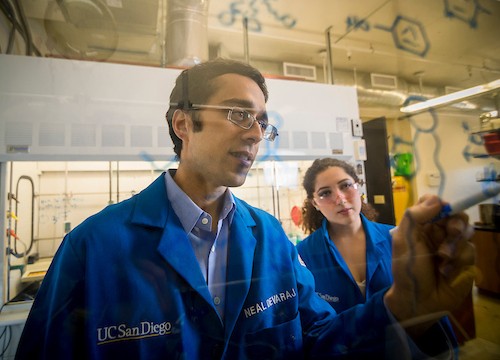Industry News
Pioneering AI Research Aims to Enhance Vision for Humans and Machines
 Researchers at the University of California, San Diego (UCSD) are pioneering advancements in artificial intelligence (AI) to enhance visual perception for both humans and machines. This innovative approach aims to bridge the gap between human vision and machine learning capabilities, potentially transforming various fields, including healthcare, robotics, and autonomous systems.
Researchers at the University of California, San Diego (UCSD) are pioneering advancements in artificial intelligence (AI) to enhance visual perception for both humans and machines. This innovative approach aims to bridge the gap between human vision and machine learning capabilities, potentially transforming various fields, including healthcare, robotics, and autonomous systems.
The research team is developing AI algorithms that can interpret and analyse visual data more effectively. By mimicking human visual processing, these algorithms can improve the accuracy of image recognition and classification tasks. This technology not only enhances machine vision but also has implications for assistive technologies, helping individuals with visual impairments.
“We started out with the question of whether we could help ophthalmologists align images of the retina, and whether AI can actually help doctors be faster and more accurate with their detection of disease,” said Truong Nguyen, professor of electrical and computer engineering at the Jacobs School of Engineering at UCSD. “And we have done that. In this collaboration it has been very critical to have both the expertise on the engineering side, with machine learning, image processing and so on, and the expertise from the clinical side. We have been very successful in terms of getting results, and have made a big, broad impact.”
“It’s exceptionally rare to have weekly discussions where engineers actively engage with patient care, making it easier to understand their work and needs,” said William Freeman, MD, Distinguished Professor and vice chair of the Viterbi Family Department of Ophthalmology at UCSD School of Medicine and director of Jacobs Retina Center at Shiley Eye Institute. “Our collaborations aren’t just one-offs; even after someone may work with us for two to three years and earns their PhD, the ongoing connection is unique. This sustained effort, bridging medicine and engineering across campus, isn’t just about claiming that we use AI – it’s a dedicated approach to tackling practical health care challenges through innovation.”
One of the key aspects of this research is the focus on the integration of human feedback into AI systems. By incorporating insights from human users, the AI can learn and adapt, resulting in more intuitive and efficient interactions. This human-centric approach is expected to lead to more reliable AI applications in real-world scenarios.
The implications of this research extend beyond academic interest. As AI continues to evolve, the potential for improved vision systems can lead to advancements in areas such as telemedicine, where remote diagnostics rely heavily on visual data, and in autonomous vehicles, where accurate perception of the environment is crucial for safety.
Overall, the work being done at UCSD represents a significant step forward in the quest to create AI that not only sees but understands the world in a way that is more aligned with human perception, paving the way for future innovations that could benefit society at large.



